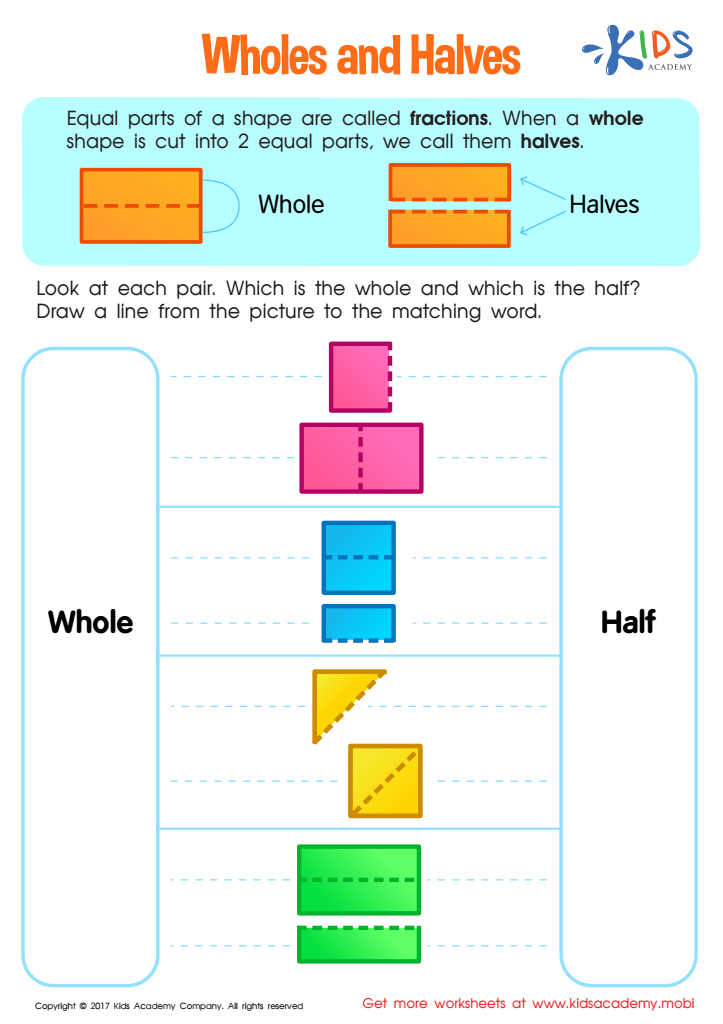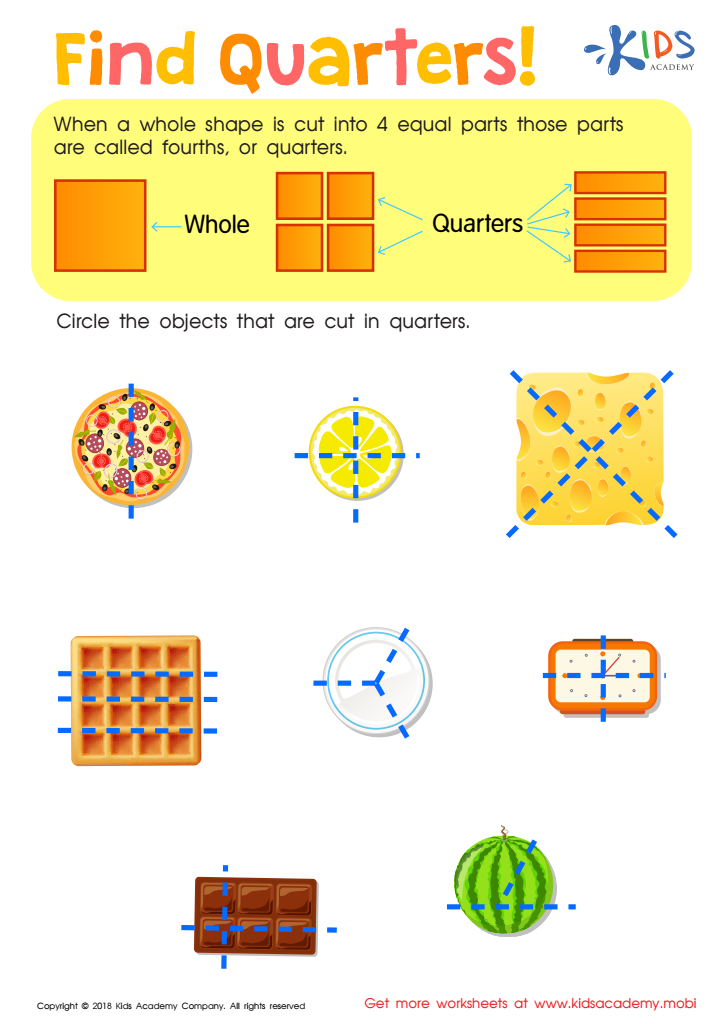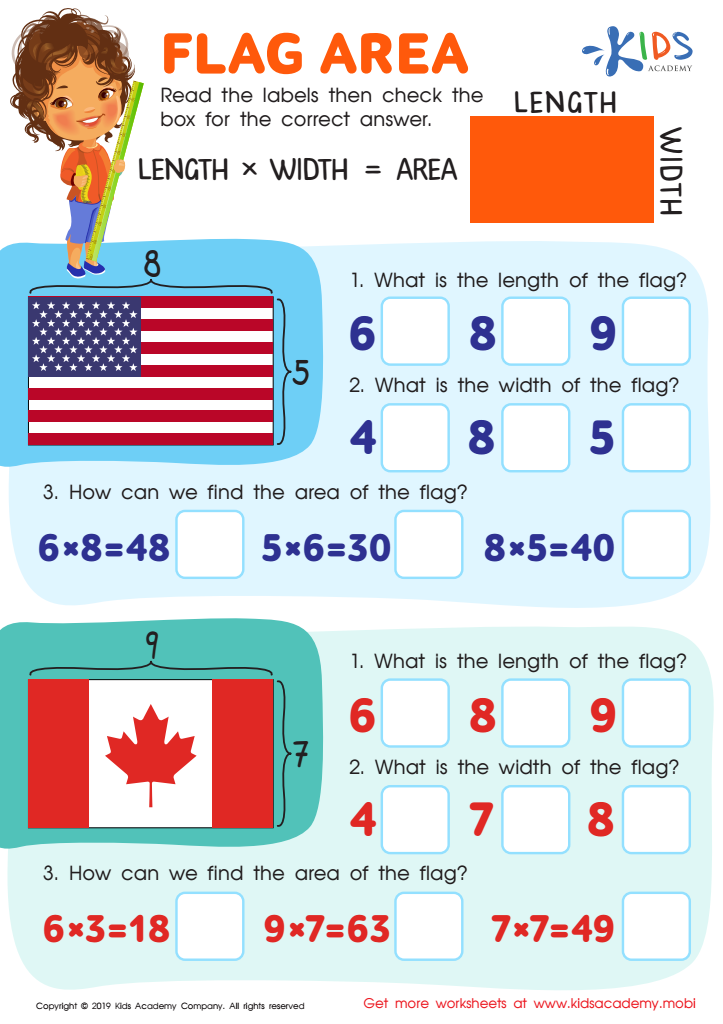Visual Learning Normal Geometry Worksheets for Ages 7-9
3 filtered results
-
From - To
Welcome to our Visual Learning Normal Geometry Worksheets for Ages 7-9! These engaging, colorful worksheets are designed to enhance geometric understanding through visual aids. Tailored for young learners, they provide a fun, interactive approach to mastering key concepts like shapes, symmetry, and spatial reasoning. By integrating visual elements, children can better grasp complex ideas and develop critical thinking skills. Each worksheet is thoughtfully crafted to cater to different learning styles, ensuring an enjoyable experience. Encourage your child's mathematical skills and creativity with our exciting geometry resources—ideal for home or classroom use. Explore our collection today and make learning geometry a visual feast!


Wholes and Halves Worksheet


Find Quarters Worksheet


Flag Area Worksheet
Visual learning in Normal Geometry is crucial for children aged 7-9, as it significantly enhances their understanding of spatial relationships and geometric concepts. At this developmental stage, children are naturally curious and often learn best through visual means. By incorporating visual learning strategies, such as using shapes, colors, and hands-on manipulatives, educators can engage students effectively, making abstract geometric ideas concrete and relatable.
Understanding geometry lays the foundation for critical thinking and problem-solving skills. As children encounter shapes and forms, they begin to recognize patterns, develop measurement skills, and improve their logic. Visual learning also connects mathematics to real-world contexts, as students can relate geometric concepts to their surrounding environment, thereby fostering curiosity and practical application.
Furthermore, in a classroom that embraces visual learning, students are more likely to develop a positive attitude toward math. They gain confidence in their abilities and can express their understanding creatively. For parents, recognizing the value of visual learning in geometry means they can support their children’s education at home, reinforcing what they learn in school through fun and engaging activities. Overall, prioritizing visual learning in Normal Geometry is essential for inspiring a lifelong appreciation of math in young learners.
 Assign to My Students
Assign to My Students


























